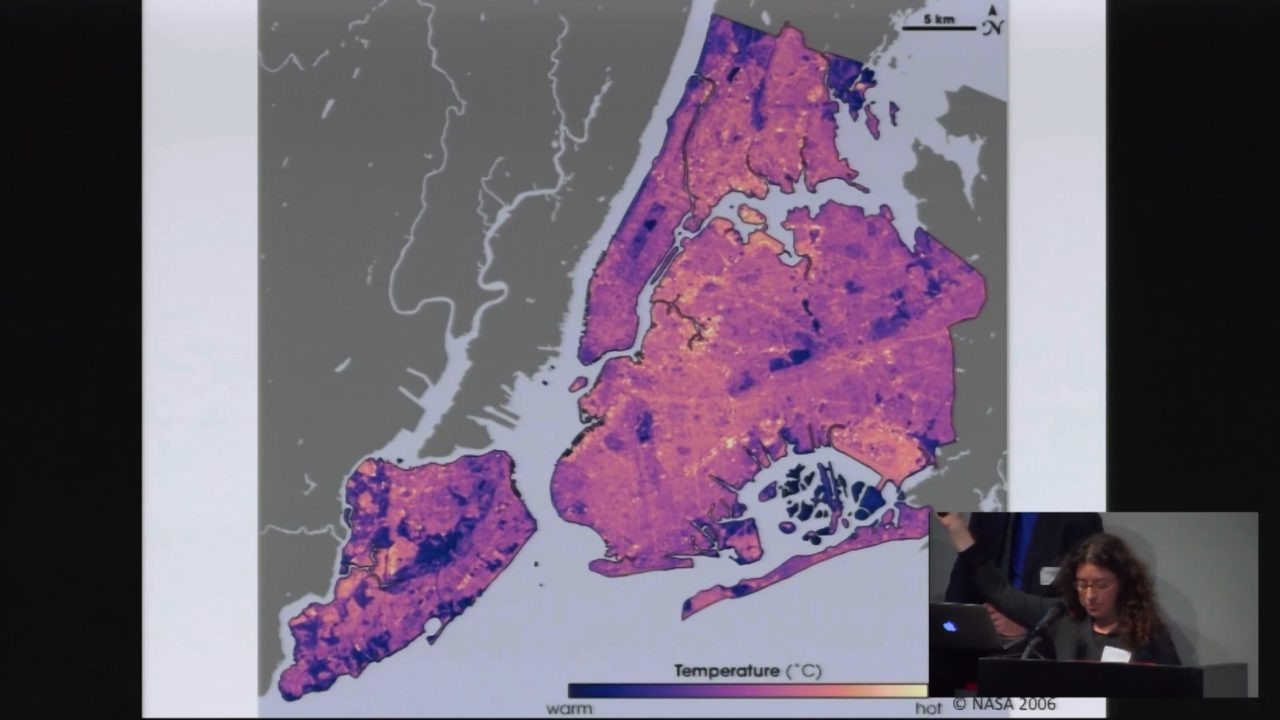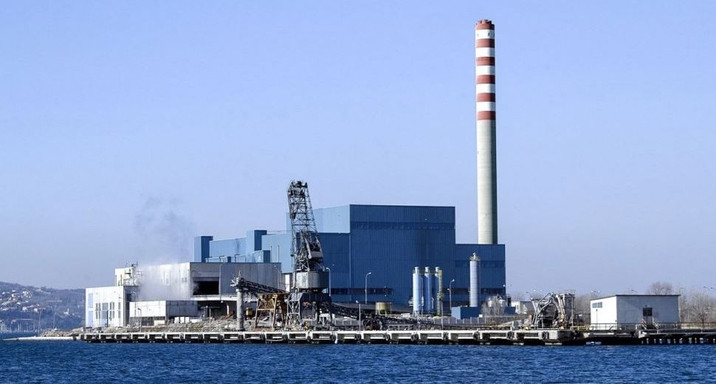Cities across the globe are changing to cope with ever more intense heatwaves, heavier storms, and flooding. Here's what they can do to protect their most vulnerable populations.
For some residents in Lagos, pulling discarded plastic bottles, balls of aluminum foil, cans and other waste out of drains and gutters not only means making the city look cleaner. It could also mean the difference between stepping through puddles or their houses being completely flooded.
"It's been of concern seeing so much litter and blockages in our drains and canals," said Betty Aikhoje, a volunteer with Reswaye, a Nigerian organization trying to educate people on the problems caused by dumping waste. "Trying to keep our drainages clean and clear helps us save a lot or problems with our buildings and the environment in general."
Problems like flooding. Nigeria's largest city will receive less rainfall on average in the coming years. But when it does rain, it will likely be heavier, say experts. Clearing the drains is just one small step, though authorities have said upgrading and reconstructing drainage systems will be needed to prevent more flooding.
Lagos is just one of many urban centers around the world having to adapt to the implications of rising temperatures.
Urban Heat Island Effect: A Major Challenge
Home to more than half the global population, cities are warming faster than rural areas. They are having to find ways to deal with ever more frequent and intense heatwaves, drought, rainfall, hurricanes, and wildfires linked to humans burning fossil fuels to generate energy, and power transport and industry.
The way cities are built can amplify risks from extreme weather. The volumes of concrete used to build roads and buildings can heat cities up and also prevent excess rainfall from draining away, leading to flooding.
Concrete's Role in Urban Heat
Concrete also traps heat, exacerbating heat waves. It has major impacts on human health, city infrastructure and society, says William Nichols, team lead on climate and resilience at global risk intelligence firm Verisk Maplecroft.
"You have a number of ways that extreme heat can put pressure on power systems of water supplies, for example. And there's literature looking at how prolonged heat can influence things like political unrest and civil disobedience as well," he added.
The Global Impact of Rising Temperatures
Planting trees is one way cities are trying to deal with the rising heat. Recent research looking at the impact of street trees on urban temperatures found that an increase from no tree cover to 50% in a particular location led to a drop of 0.5 degrees.
Re-Naturalizing Cities for Resilience
"Extreme heat and flooding, one of the important things you can do that addresses both is re-naturalizing places," said David Miller, managing director of a group of cities known as the C40 Centre for Urban Climate Policy and Economy and former Toronto mayor.
In Sierra Leone's capital, Freetown, planting trees has become part of the urban development plan. The city finances the program through tokens sold on private and carbon markets. It is on track to plant one million trees in the city by the end of the year and experts say such projects have huge potential.
"The largest benefits are related to the avoided damages to infrastructure from natural hazards such as coastal erosion, flooding, sea level rise, and landslides," said Michail Kapetanakis, a research analyst with the International Institute for Sustainable Development think tank.
The Multifaceted Benefits of Trees
Trees and woodlands can help counter the impacts of extreme flooding by slowing down water flows, stabilizing soil and can prevent landslides. They also absorb carbon dioxide helping to reduce greenhouse gas emissions and tackle air pollution.
There is potential to extend the project in Freetown to at least 3.8 million trees by 2050, said Kapetanakis, who analyzed costs for the project versus its benefits. "It's a very straightforward, cheap and sustainable solution that addresses a lot of problems at the same time," he told DW.
Vulnerability: A Global Issue
Cities in Africa and Asia are among those estimated to have the highest risk associated with climate. Khartoum in Sudan, Mogadishu in Somalia, Ahmedabad in India, Hyderabad in Pakistan and Lagos are counted as the top five of Verisk Maplecroft's Climate Hazard and Vulnerability Index 2050.
"Climate hazard and vulnerability is really a kind of combination of the physical threat that is being faced and then also the ability of a city to deal with that threat," said Nichols, of Verisk Maplecroft.
Inequalities in Climate Resilience
A country like Nigeria in the Global South, and one in the Global North, like Germany, may experience equally intense heavy rainfall events, for example, and yet people in Nigeria would be hit harder because there are less mechanisms in place to help them cope.
While urban regions in North America and Europe also face increasing challenges due to extreme weather, better infrastructure, better disaster response, better access to healthcare makes residents less vulnerable, Nichols said.
Addressing Vulnerability in All Communities
Still, even in the richer Global North, there are people that are more vulnerable than others, says Thandile Chinyavanhu, a Stop Drilling Start Paying campaigner with NGO Greenpeace International.
This is also backed by the city climate hazard survey: Administrations from richer and poorer cities alike report that it's particularly low-income households, elderly and disabled people, children and other vulnerable groups, who are most impacted by extreme weather events.
"There is a pronounced impact in the communities that are the poorest and the most vulnerable because infrastructure is not as developed as in the wealthy areas," Chinyavanhu told DW. For example, in Johannesburg in South Africa where poorer communities tend to settle in areas that are more prone to flash flooding because they are unable to afford places with better drainage, she said.
Inclusive Urban Design for a Just Transition
Some cities are trying to make changes in low-income neighborhoods that tackle multiple social and environmental problems. In the US city of Boston, organizations and residents have come together to develop parks in poorer areas that will also help protect the city from the warming climate.
Planned changes at the coastal Moakley Park include the integration of dams into the landscape of the park, the use of salt-water resilient vegetation and stormwater meadows.
"The idea is when you get a 50 or 100-year-storm, those parks will be a place that will absorb water. But the rest of the years it serves a local recreation need for a place that was desperate for those kinds of facilities," said Miller.
Challenges and Solutions in Informal Settlements
Improving conditions in poorer areas can have far-reaching positive impacts. But a challenge facing many cities is the increase in informal settlements, which spring up to house the growing number of people moving to urban areas.
"We see cities like Lagos, for example, which has this huge amount of unplanned developments making up a huge bulk of where people live. That's obviously very difficult then to deal with climate change. The structure isn't there that supports it," said Nichols.
Collaborative Solutions and Financing
Working with the poorest people to meet their needs can help, said Miller. For example, with no power to cook, people in poorer areas in Freetown, Sierra Leone, cut down trees for wood. Authorities there are working with communities in informal settlements to provide them with more efficient, cleaner cooking alternatives.
"I think that the global best practice comes from that philosophy that if you're going to address climate change, both the impact of it and the causes, you should speak directly to and include in all of the conversations the people who are affected the most," said Miller.
One major problem to implementing solutions in cities, however, is financing, particularly in the Global South, Miller added.
Funding the Transition
A United Nations Environmental Programme report released in 2023 said that despite the need to scale up financing to developing countries to help them cope with the impacts of climate change, funding flows had declined.
According to the sixth assessment report of the Intergovernmental Panel on Climate Change, adaptation measures currently planned can already reduce the impacts of global warming on both richer and poorer communities. Implementing all possible adaptations –which would require more financing –could shrink climate inequality even further.
In 2022, financing put in place by industrialized nations to pay for changes that would help communities in developing countries cope with the impacts of rising temperatures reached $32.4 billion and around halfway towards a goal to double adaptation financing by 2025.
"If you think about adaptation projects, particularly state-of-the-art ones, there's massive investment required. So, we need to mobilize huge amounts of capital, and we need to mobilize it very quickly," said Miller.

















